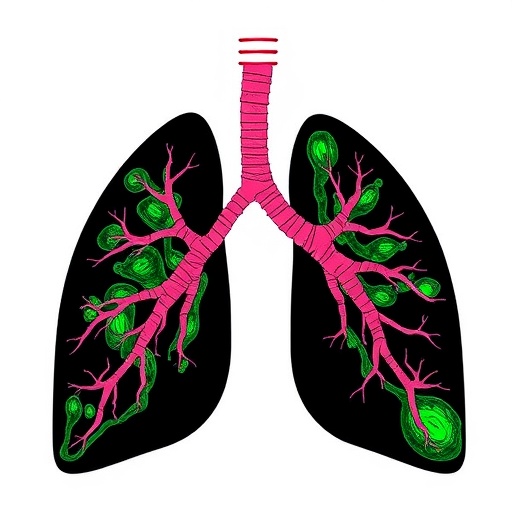In recent years, the conversation surrounding health-related quality of life (HRQoL) has gained significant traction, especially in relation to the elderly population. The nuances of social support networks—particularly emotional support networks—are increasingly being highlighted as critical components that can substantially influence the health outcomes of older adults. A groundbreaking study by Xu et al. focuses on gender differences in the emotional support networks available to floating elderly individuals in China, illuminating how these networks directly correlate with their overall well-being.
Floating elderly refer to older individuals who have migrated, often from rural to urban areas, typically in search of better opportunities or to live with family members. This demographic shift raises pressing questions regarding the adequacy of their support systems, and understanding these systems can provide valuable insights into the mental and physical health challenges faced by this population. Xu and colleagues embarked on this research to deepen our understanding of how these networks operate differently for men and women, as previous literature has suggested that gender may play a pivotal role in shaping health outcomes.
The researchers conducted a cross-sectional study involving a sizable sample of floating elderly individuals across various provinces in China. By employing a mixed-methods approach, the study harnessed both quantitative survey tools and qualitative interviews, ensuring a holistic understanding of the emotional support dynamics at play within this community. This methodological rigor allowed the study to draw nuanced distinctions between how men and women utilize and benefit from their emotional support networks, facilitating a more comprehensive exploration of gendered experiences.
In examining the data, Xu et al. found that women tend to maintain more extensive emotional support networks compared to men. This divergence could be attributed to traditional gender roles where women are often socialized to nurture and maintain relationships. The implication here is profound: as women age, these networks can offer vital emotional and psychological support that enhances their HRQoL, allowing them to navigate the various challenges accompanying aging with greater resilience.
On the contrary, men exhibited a reliance on fewer, more concentrated support connections. This could indicate a vulnerability in their support systems, particularly when facing health-related issues or social isolation. The fact that men may not engage as extensively in the formation of supportive networks suggests that they could be at a greater risk for adverse health outcomes due to loneliness or lack of social engagement as they age. This discovery further cements the notion that societal expectations surrounding masculinity may limit emotional expressiveness and lead to reliance on fewer social connections.
The study’s findings have significant public health implications, particularly in the realm of elderly care and support services. With a growing aging population, the need to tailor health interventions that consider these gender differences has never been more pressing. Creating frameworks that encourage social participation and connectivity for men, while simultaneously fortifying the existing networks of women, could enhance HRQoL across the board for this demographic. Policymakers and healthcare providers must take note of these findings to better allocate resources and develop programs that promote emotional well-being.
Beyond quantitative implications, the qualitative data extracted from interviews offered vivid portraits of the floating elderly’s life experiences, shedding light on the emotional ramifications of their social networks. Participants shared stories of both resilience and struggle, revealing how the interplay of emotional support and physical health impacted their day-to-day lifestyles. This personal testimony enriches the study, allowing readers to grasp the profound influence of social relationships on health in a way that statistics alone cannot convey.
The results of Xu et al.’s study must also be seen in the broader context of China’s shifting socio-economic landscape. Rapid urbanization has created a unique set of challenges and opportunities for the elderly population. With many floating elderly having lived through significant social and economic changes, their experiences are intrinsically tied to China’s national narrative. Within this framework, examining emotional support networks not only sheds light on individual health outcomes but also encourages an exploration of societal norms, values, and historical contexts that shape these networks.
An essential takeaway from this research is the call for interventions that not only focus on enhancing physical health but also prioritize the emotional landscapes that influence quality of life for the elderly. Initiatives that foster greater community engagement, address the stigma surrounding mental health, and encourage the establishment of supportive relationships will be invaluable as the population ages further. By empowering both genders to cultivate rich social bonds, we can mitigate some of the health risks associated with aging.
A critical perspective emerging from the study is the potential for utilizing technology as a driver for enhancing emotional support networks among the elderly. Digital platforms could facilitate communication and connection among older adults, especially men who might otherwise rely on limited in-person interactions. By leveraging technology, we could create virtual spaces that allow for shared experiences, thus fostering emotional resilience and reducing feelings of isolation.
Moreover, the need for further research is paramount. As we increasingly understand the complexities of social support networks, future studies should delve deeper into the mechanisms that underpin these gender differences. Exploring additional factors such as cultural attitudes towards aging, economic status, and educational background can yield important insights into how best to support elderly populations.
In conclusion, Xu et al.’s research underscores the critical importance of emotional support networks in determining the health-related quality of life among the floating elderly in China. Gender differences play a significant role in shaping these networks, leading to varying health outcomes for men and women. As we move forward, it is essential to adopt a nuanced approach that acknowledges these differences, promotes inclusivity, and advocates for comprehensive support systems that empower all elderly individuals, thereby enhancing their overall well-being and quality of life.
The findings from this groundbreaking study pave the way for a future where the emotional needs of the elderly are prioritized within health policies and community initiatives. Their insights serve as a clarion call to action for researchers, healthcare providers, and policymakers to work together in creating environments that not only support health but also foster connection, community, and ultimately, a higher quality of life for all.
Subject of Research: Gender differences in the impact of emotional support networks on health-related quality of life among floating elderly in China.
Article Title: Gender differences in the impact of emotional support networks on health-related quality of life among floating elderly: a cross-sectional study in China.
Article References:
Xu, J., Kang, Z., Hao, X. et al. Gender differences in the impact of emotional support networks on health-related quality of life among floating elderly: a cross-sectional study in China.
BMC Geriatr 25, 765 (2025). https://doi.org/10.1186/s12877-025-06406-6
Image Credits: AI Generated
DOI: 10.1186/s12877-025-06406-6
Keywords: emotional support, health-related quality of life, elderly, gender differences, China, floating population.
Tags: cross-sectional studies on elderly healthemotional support networks for older adultsemotional well-being in older populationsfloating elderly population in Chinagender differences in elderly healthgender-specific health outcomes in aginghealth-related quality of life in seniorsimpact of social support on elderly well-beingmental health challenges in floating seniorsmixed-methods research in gerontologyrural to urban migration effects on elderly careurban migration and elderly support systems





